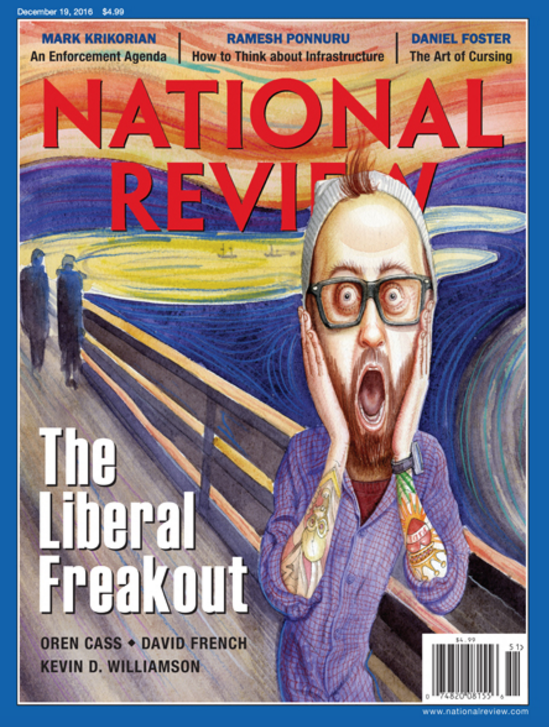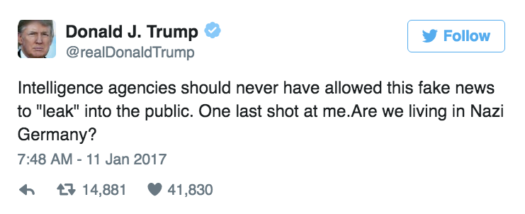Basil Halperin on the logic behind NGDP targeting
James Alexander directed me to a recent post by Basil Halperin, which is one of the best blog posts that I have read in years. (I was actually sent this material before Christmas, but it sort of fell between the cracks.)
Basil starts off discussing a program for distributing excess food production from manufacturers to food banks.
The problem was one of distributed versus centralized knowledge. While Feeding America had very good knowledge of poverty rates around the country, and thus could measure need in different areas, it was not as good at dealing with idiosyncratic local issues.
Food banks in Idaho don’t need a truckload of potatoes, for example, and Feeding America might fail to take this into account. Or maybe the Chicago regional food bank just this week received a large direct donation of peanut butter from a local food drive, and then Feeding America comes along and says that it has two tons of peanut butter that it is sending to Chicago.
To an economist, this problem screams of the Hayekian knowledge problem. Even a benevolent central planner will be hard-pressed to efficiently allocate resources in a society since it is simply too difficult for a centralized system to collect information on all local variation in needs, preferences, and abilities.
One option would simply be to arbitrarily distribute the food according to some sort of central planning criterion. But there is a better way:
This knowledge problem leads to option two: market capitalism. Unlike poorly informed central planners, the decentralized price system – i.e., the free market – can (often but not always) do an extremely good job of aggregating local information to efficiently allocate scarce resources. This result is known as the First Welfare Theorem.
Such a system was created for Feeding America with the help of four Chicago Booth economists in 2005. Instead of centralized allocation, food banks were given fake money – with needier food banks being given more – and allowed to bid for different types of food in online auctions. Prices are thus determined by supply and demand. . . .
By all accounts, the system has worked brilliantly. Food banks are happier with their allocations; donations have gone up as donors have more confidence that their donations will actually be used. Chalk one up for economic theory.
Basil points out that while that solves one problem, there is still the issue of determining “monetary policy”, i.e. how much fake money should be distributed each day?
Here’s the problem for Feeding America when thinking about optimal monetary policy. Feeding America wants to ensure that changes in prices are informative for food banks when they bid. In the words of one of the Booth economists who helped design the system:
“Suppose I am a small food bank; I really want a truckload of cereal. I haven’t bid on cereal for, like, a year and a half, so I’m not really sure I should be paying for it. But what you can do on the website, you basically click a link and when you click that link it says: This is what the history of prices is for cereal over the last 5 years. And what we wanted to do is set up a system whereby by observing that history of prices, it gave you a reasonable instinct for what you should be bidding.”
That is, food banks face information frictions: individual food banks are not completely aware of economic conditions and only occasionally update their knowledge of the state of the world. This is because obtaining such information is time-consuming and costly.
Relating this to our question of optimal monetary policy for the food bank economy: How should the fake money supply be set, taking into consideration this friction?
Obviously, if Feeding America were to randomly double the supply of (fake) money, then all prices would double, and this would be confusing for food banks. A food bank might go online to bid for peanut butter, see that the price has doubled, and mistakenly think that demand specifically for peanut butter has surged.
This “monetary misperception” would distort decision making: the food bank wants peanut butter, but might bid for a cheaper good like chicken noodle soup, thinking that peanut butter is really scarce at the moment.
Clearly, random variation in the money supply is not a good idea. More generally, how should Feeding America set the money supply?
One natural idea is to copy what real-world central banks do: target inflation.
Basil then explains why NGDP targeting is likely to be superior to inflation targeting, using a Lucas-type monetary misperceptions model.
III. Monetary misperceptions
I demonstrate the following argument rigorously in a formal mathematical model in a paper, “Monetary Misperceptions: Optimal Monetary Policy under Incomplete Information,” using a microfounded Lucas Islands model. The intuition for why inflation targeting is problematic is as follows.Suppose the total quantity of all donations doubles.
You’re a food bank and go to bid on cheerios, and find that there are twice as many boxes of cheerios available today as yesterday. You’re going to want to bid at a price something like half as much as yesterday.
Every other food bank looking at every other item will have the same thought. Aggregate inflation thus would be something like -50%, as all prices would drop by half.
As a result, under inflation targeting, the money supply would simultaneously have to double to keep inflation at zero. But this would be confusing: Seeing the quantity of cheerios double but the price remain the same, you won’t be able to tell if the price has remained the same because
(a) The central bank has doubled the money supply
or
(b) Demand specifically for cheerios has jumped up quite a bitIt’s a signal extraction problem, and rationally you’re going to put some weight on both of these possibilities. However, only the first possibility actually occurred.
This problem leads to all sorts of monetary misperceptions, as money supply growth creates confusions, hence the title of my paper.
Inflation targeting, in this case, is very suboptimal. Price level variation provides useful information to agents.
IV. Optimal monetary policy
As I work out formally in the paper, optimal policy is instead something close to a nominal income (NGDP) target. Under log utility, it is exactly a nominal income target. (I’ve written about nominal income targeting before more critically here.). . . Feeding America, by the way, does not target constant inflation. They instead target “zero inflation for a given good if demand and supply conditions are unchanged.” This alternative is a move in the direction of a nominal income target.
V. Real-world macroeconomic implications
I want to claim that the information frictions facing food banks also apply to the real economy, and as a result, the Federal Reserve and other central banks should consider adopting a nominal income target. Let me tell a story to illustrate the point.Consider the owner of an isolated bakery. Suppose one day, all of the customers seen by the baker spend twice as much money as the customers from the day before.
The baker has two options. She can interpret this increased demand as customers having come to appreciate the superior quality of her baked goods, and thus increase her production to match the new demand. Alternatively, she could interpret this increased spending as evidence that there is simply more money in the economy as a whole, and that she should merely increase her prices proportionally to account for inflation.
Economic agents confounding these two effects is the source of economic booms and busts, according to this model. This is exactly analogous to the problem faced by food banks trying to decide how much to bid at auction.
To the extent that these frictions are quantitatively important in the real world, central banks like the Fed and ECB should consider moving away from their inflation targeting regimes and toward something like a nominal income target, as Feeding America has.
The paper he links to contains a rigorous mathematical model that shows the advantages of NGDP targeting. He doesn’t claim NGDP targeting is always optimal, but any paper that did would actually be less persuasive, as it would mean the model was explicitly constructed to generate that result. Instead the result flows naturally from the Lucas-style archipelago model, where each trader is on their own little island observing local demand conditions before aggregate (NGDP conditions). This is the sort of approach I used in my first NGDP futures targeting paper, where futures markets aggregated all of this local demand (i.e. velocity) information. However Basil’s paper is light years ahead of where I was in 1989.
I can’t recommend him highly enough. I’m told he recently got a BA from Chicago, which suggests he may be another Soltas, Wang or Rognlie, one of those people who makes a mark at a very young age. He seems to combine George Selgin-type economic intuition (even citing a lovely Selgin metaphor at the end of his post) with the sort of highly technical skills required in modern macroeconomics.
Commenters often ask (taunt?) me with the question, “Where is the rigorous model for market monetarism”. I don’t believe any single model can incorporate all of the insights from any half decent school of thought, but Basil’s model certainly provides the sort of rigorous explanation of NGDP targeting that people seem to demand.
Basil has lots of other excellent posts, and over the next few weeks and months I will have more posts responding to some of the points he makes (which to his credit, include criticism of NGDP targeting–he’s no ideologue.)




